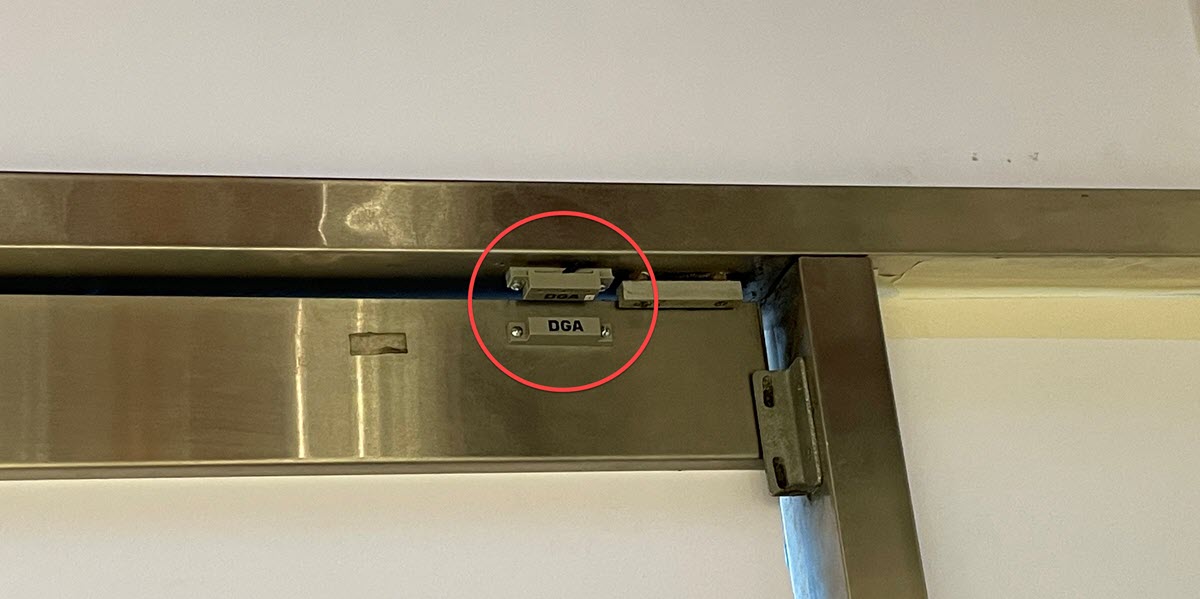Door/Window Contact Sensors in Business Security Systems
Mike Reynolds is the Director of Sales at DGA Security. He has more than 17 years of commercial security experience, and has strong expertise in designing security systems for national accounts and businesses in “high risk” markets. Mike enjoys collaborating with customers, designers and industry trade partners to solve unique business security challenges and create innovative solutions.
When it comes to door/window contact sensors used in business security systems, the most common mistake we see is either overuse or underuse of these devices. Sometimes we see a contact sensor installed on every door and window regardless of location – which likely increased the installation cost without adding additional security benefit. Other times, we see doors and windows that are easily accessible from the outside missing a contact sensor, making the business vulnerable to potential intrusion attempts.
Along with motion sensors, door/window contact sensors are required components of any well-designed business security system. If you’re thinking about installing door/window contact sensors to protect your business location, here is what you need to know.
How Door and Window Contact Sensors Work
Door/window contact sensors provide the first layer of defense against burglaries that occur via a door or window, one of the most common ways through which intruders enter a business premises. When a protected door or window is opened after the security system has been armed, a local sounder is activated and an alarm signal is sent to the monitoring center. Upon receiving the alarm signal, the monitoring center will immediately attempt to notify the location’s emergency contacts and contact the local police if necessary.
A contact sensor is a two-part device comprised of 1) a reed switch, a simple electrical switch controlled by a magnetic field and 2) a magnet. The reed switch is mounted on the frame of the door or window, and the magnet is mounted on the moving part of the door or window. When the door or window is closed, the two pieces meet (or come in very close proximity) to create a “closed-loop circuit,” allowing an electrical current to flow. Opening the door or window interrupts the circuit, causing an alarm condition and signaling the monitoring center to take the next steps.
Different Types of Door and Window Contact Sensors
Commercial facilities and buildings have many different types of doors, windows and gates. Let’s review different types of door/window contact sensors that are most commonly used in these commercial settings:

We included a quarter next to each device for size reference.
Which Doors and Windows Should You Protect With a Contact Sensor?
Contrary to what some security companies may recommend, not every single door and window needs to be protected with a contact sensor. So, what is the rule of thumb to use when trying to determine which doors and windows to protect?
First, all exterior doors should be protected with a contact sensor – full stop. Protecting all interior doors is an overkill in most situations as motion sensors should already be doing the heavy lift to detect intruder movements inside the premises.
As for windows, any window located within 18 feet from the ground or 14 ft from another window or ledge should be protected with a contact sensor. If installing a contact sensor is not possible for some reason, make sure a motion sensor is providing protection for that window from inside.
If your business handles high-value items such as jewelry, fine art or other luxury goods, your business insurance company will likely require a specific type of UL Listed security system. In such cases, the type of UL Listed security system required will dictate which doors and windows must have a contact sensor in order to meet your business insurance requirements. Be sure to hire a security company that has a strong track record in designing and installing UL Listed security systems to ensure you have a smooth, hassle-free experience.
What Could Go Wrong With Door/Window Contact Sensors?
While door and window sensors play a critical role in protecting your business premises, they have their limitations. Here are the top tips to help you avoid common mistakes:
-
If the door is in a poor condition, fix it first before installing a contact sensor.
A contact sensor installed on a door that is sagging or misaligned will likely become a source of ongoing nuisance by causing false alarms even when the door is “closed.” - Back up door/window contact sensors with motion sensors. If an intruder kicks out a panel in a wooden door and crawls through that opening, the contact sensor would not detect that anything is amiss. This is why every door/window sensor contact should be backed with motion sensors. Door/window contact sensors and motion sensors are the two primary pillars in creating a reliable business security system.
- Contact sensors cannot tell you if doors and windows are locked. Door/window contact sensors can only indicate if the protected doors/windows are closed, not whether they are locked. Someone must manually check and ensure that every exterior door and accessible window is locked before arming the business security system.
- Always install door contact sensors at the top of the door, on the opening side. A door sensor installed at the bottom of the door has a higher chance of becoming dislocated due to foot traffic. Installing a contact sensor on the hinge side of the door will allow the door to open wide enough to let an intruder enter without triggering an alarm.
Got Questions About Business Security Systems? We’ve Got Answers.
DGA has been specializing in commercial security and fire systems for more than 50 years. Call us for a free consultation at 800 Pick DGA (800.742.5342) or submit a request online.
See related articles about intrusion systems:
Installing glass break sensors can be tricky: Here's what you need to know
Why are motion sensors necessary in business security systems?
Tips for protecting high-security areas within your business



